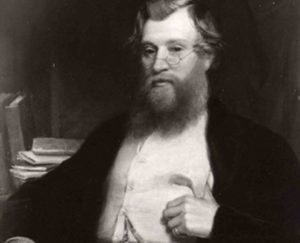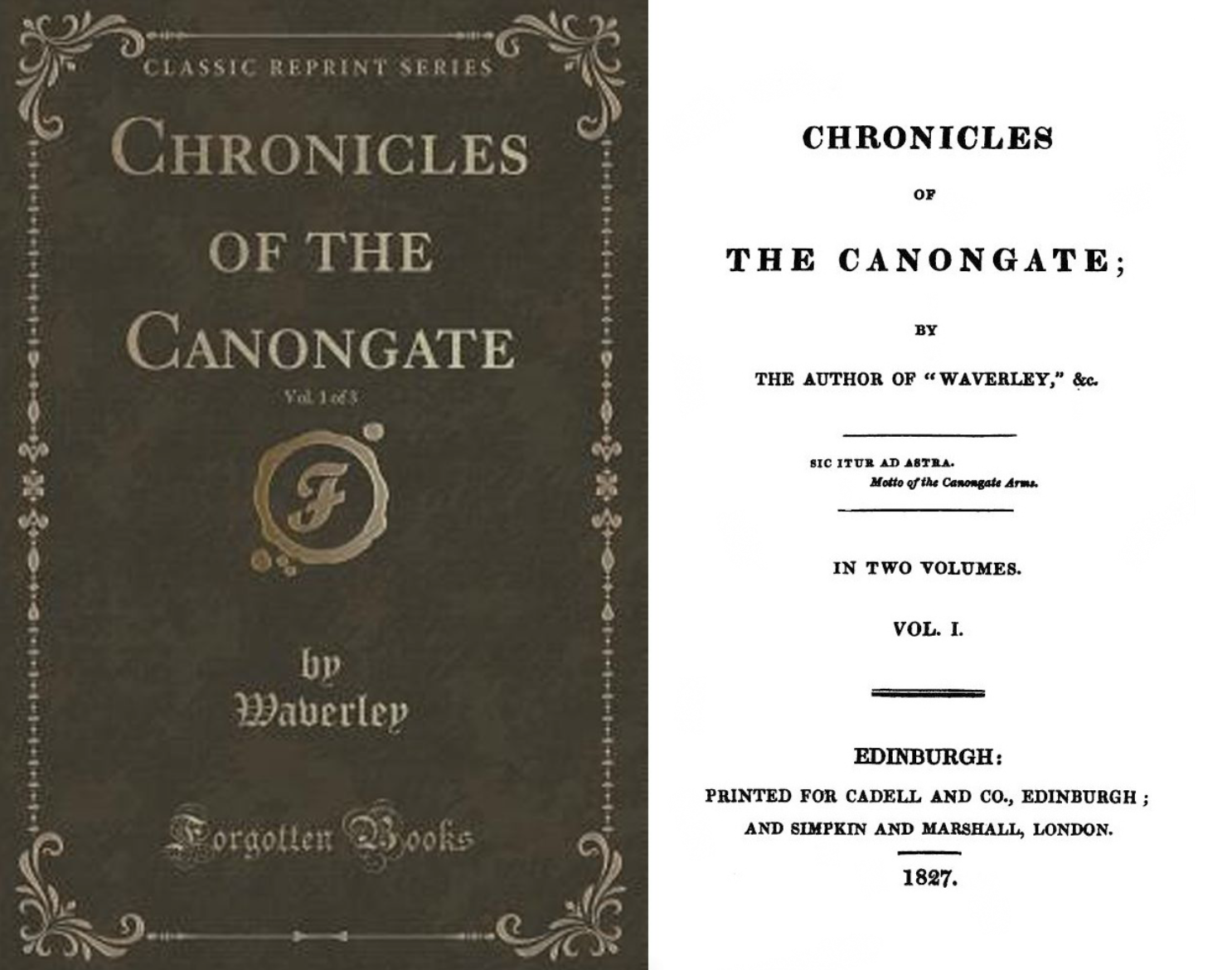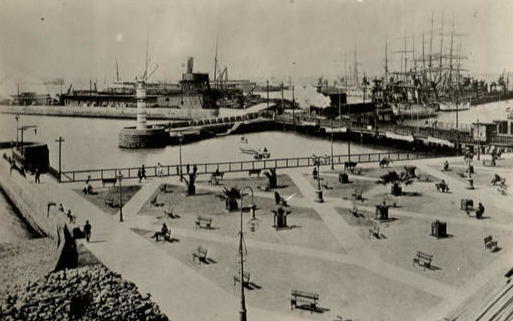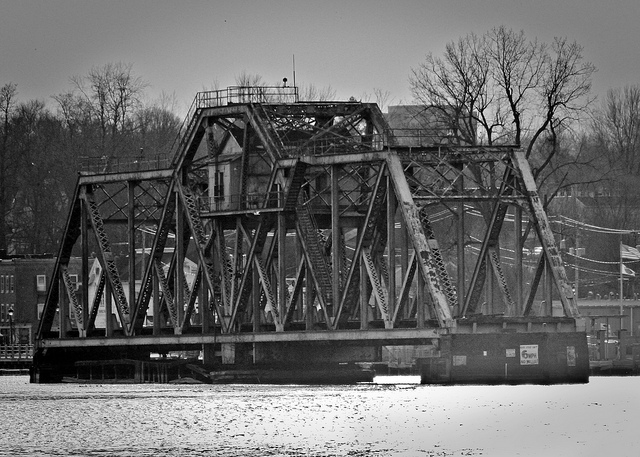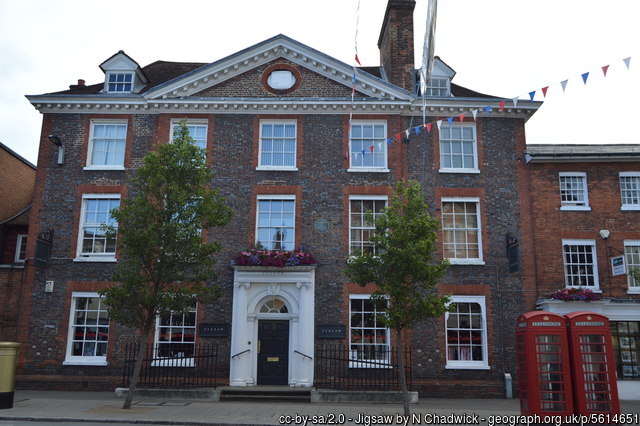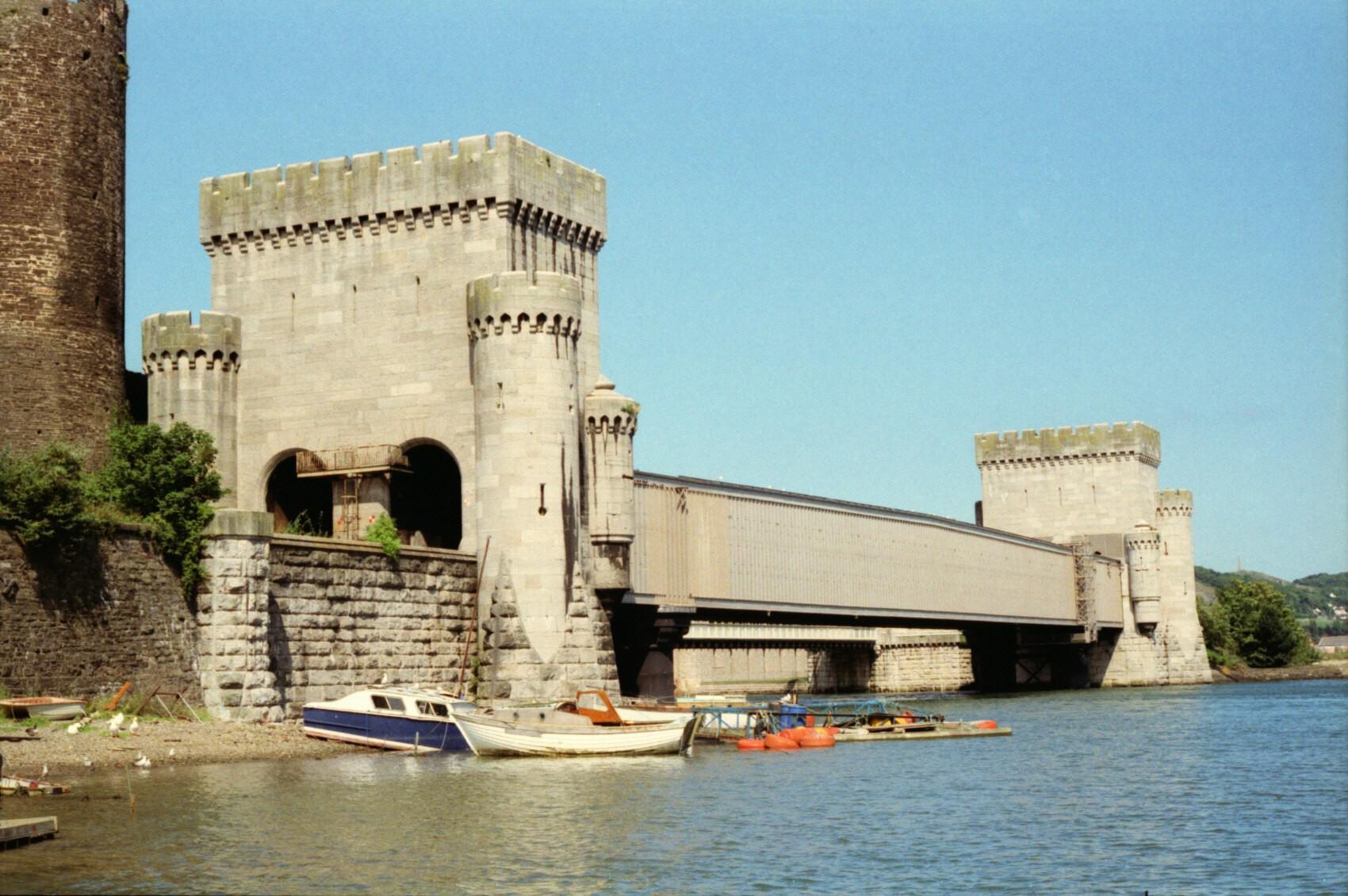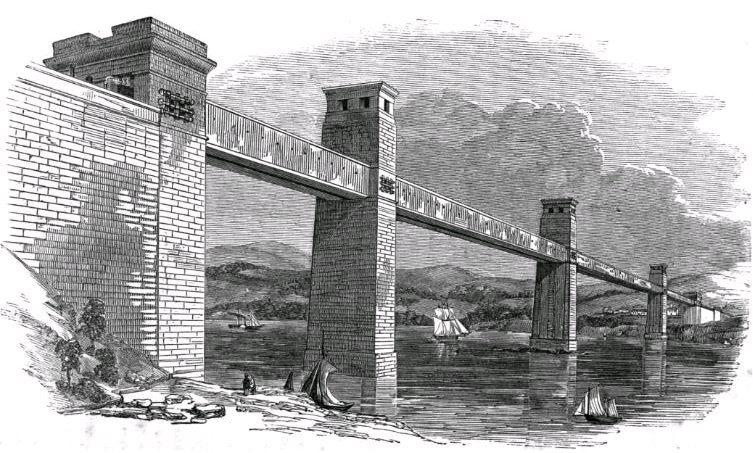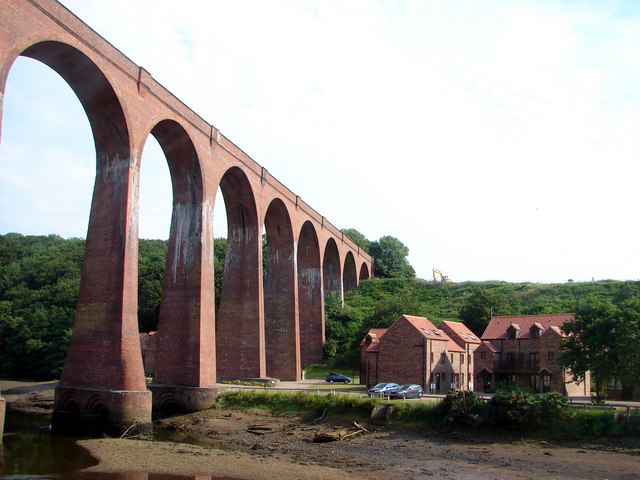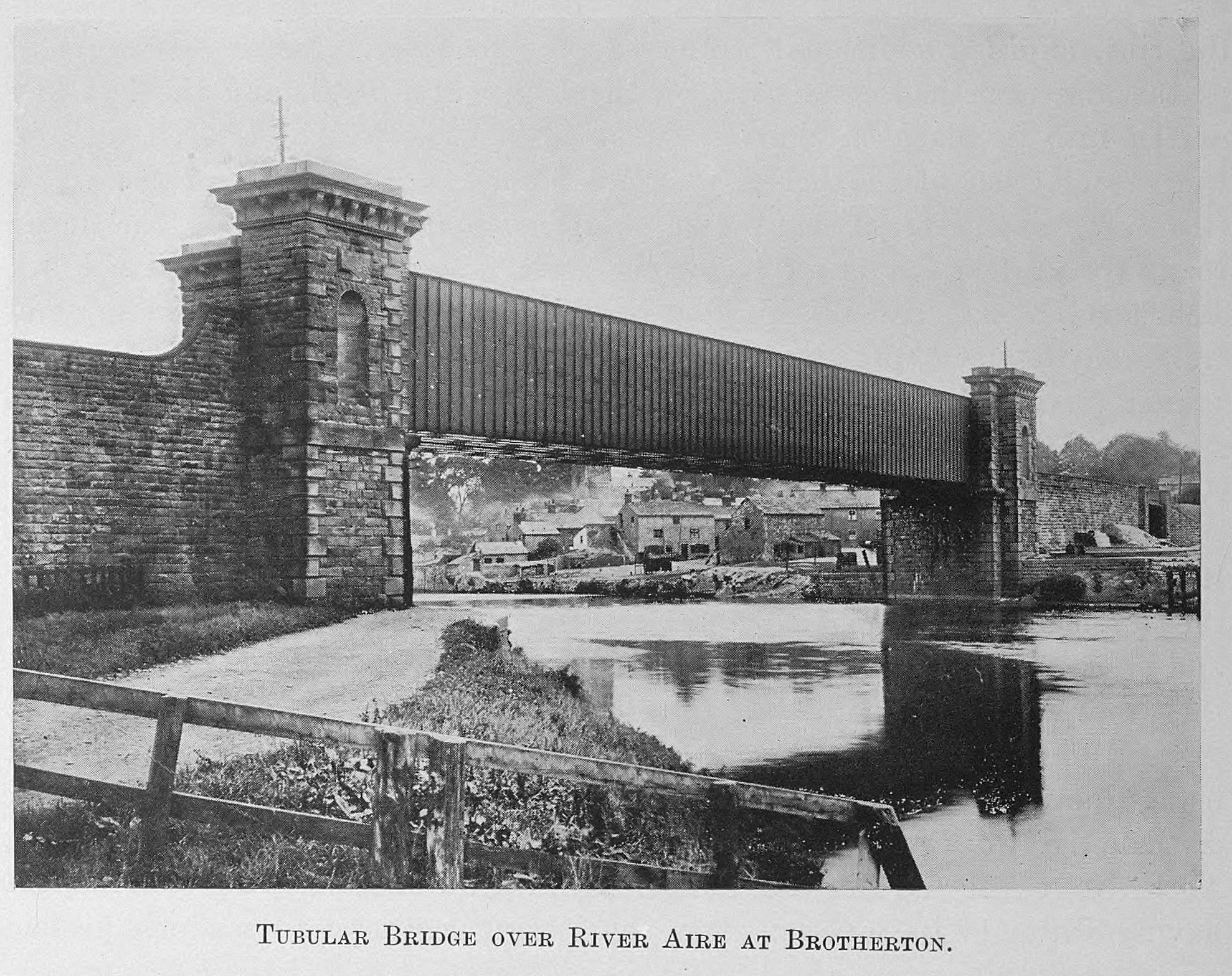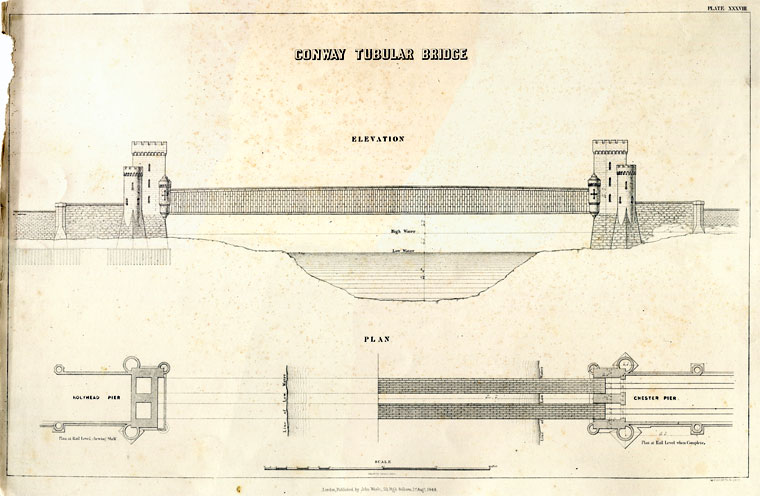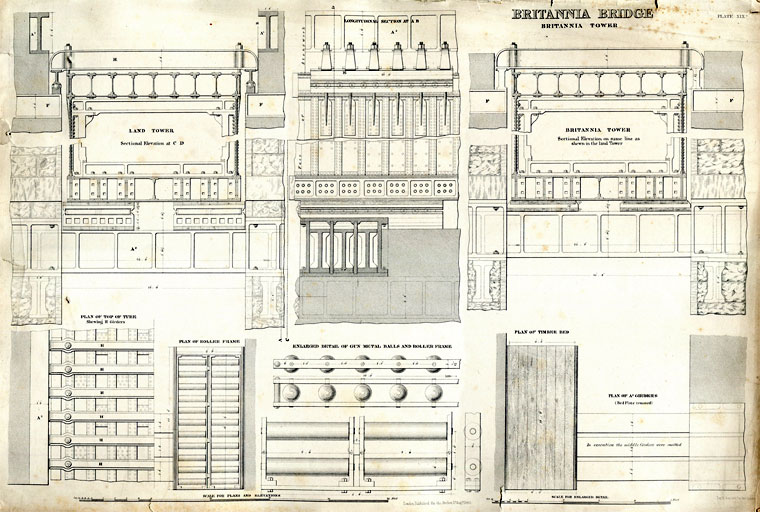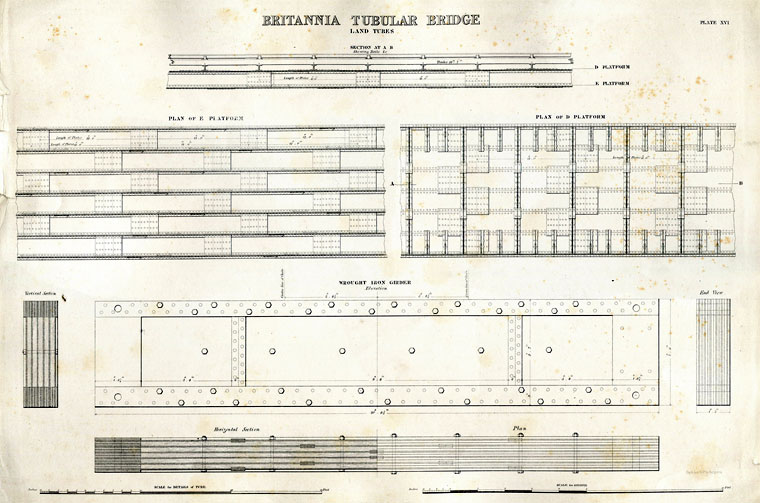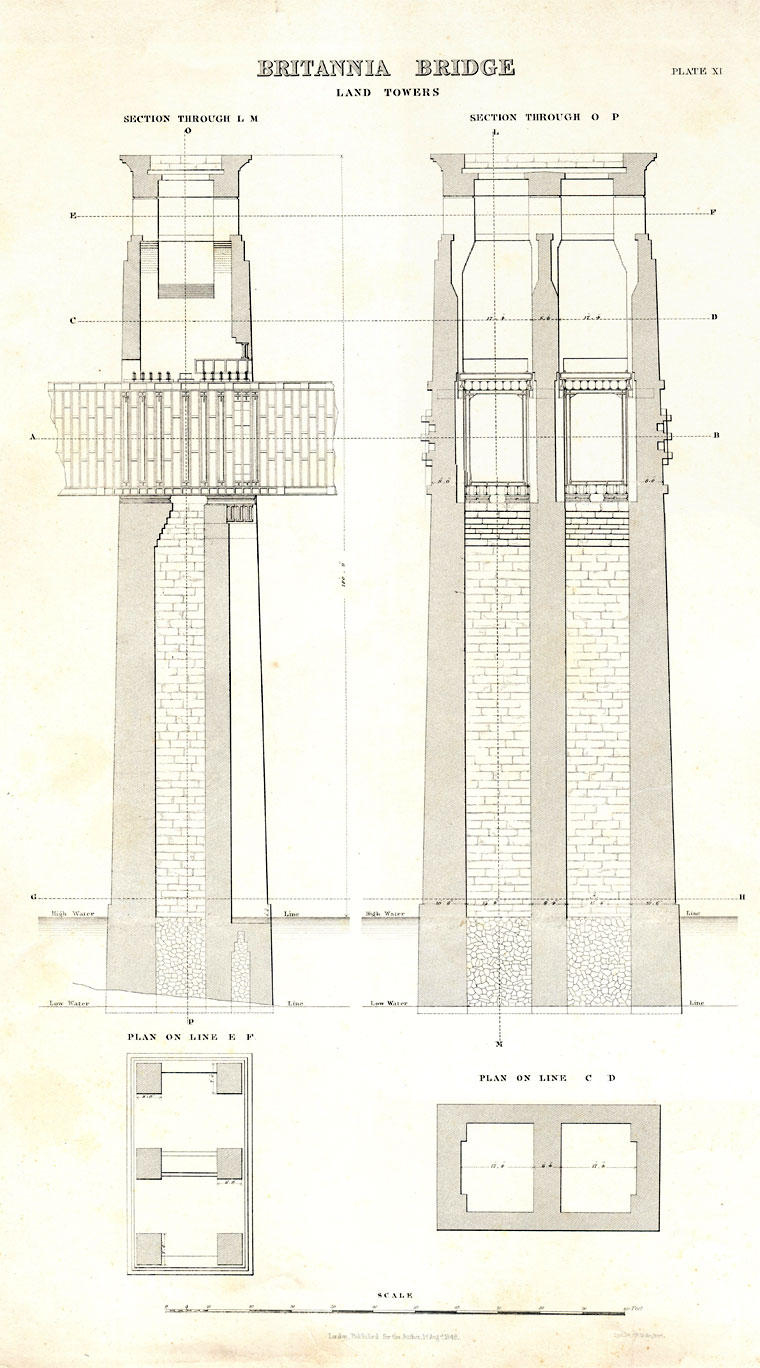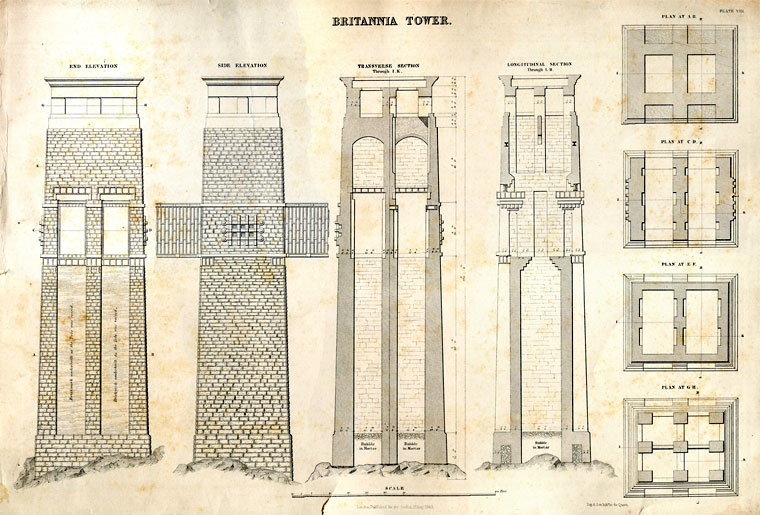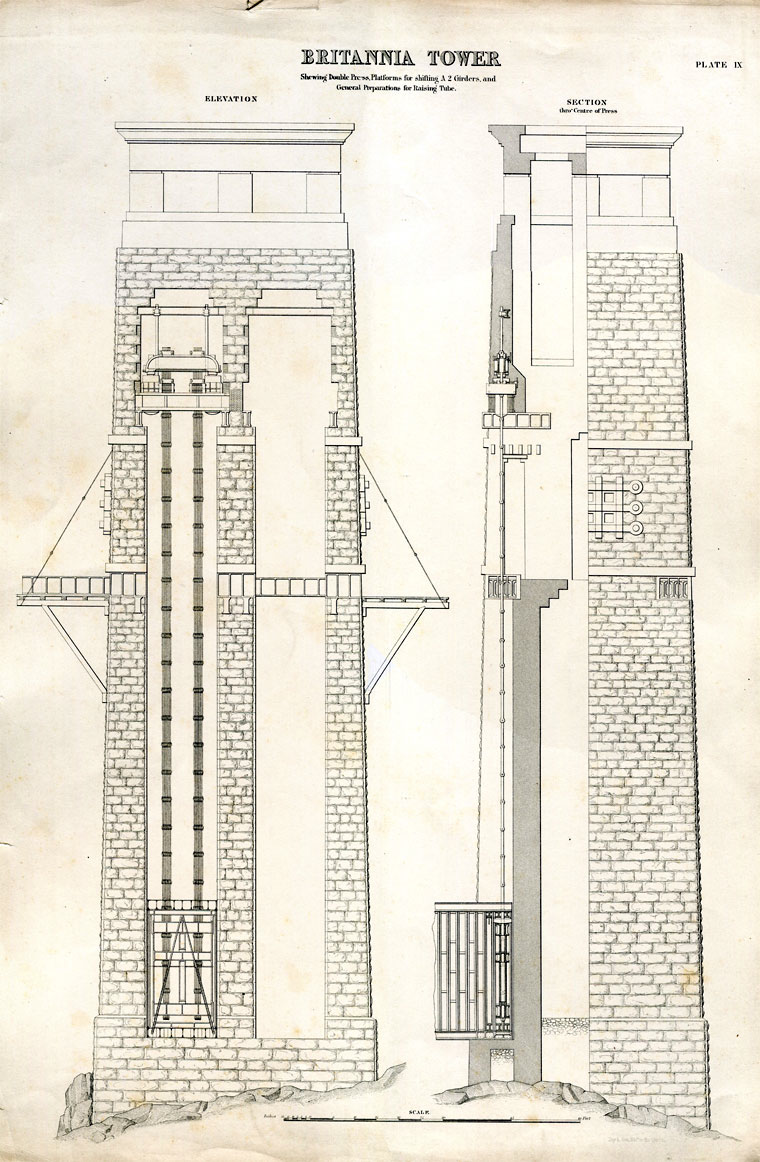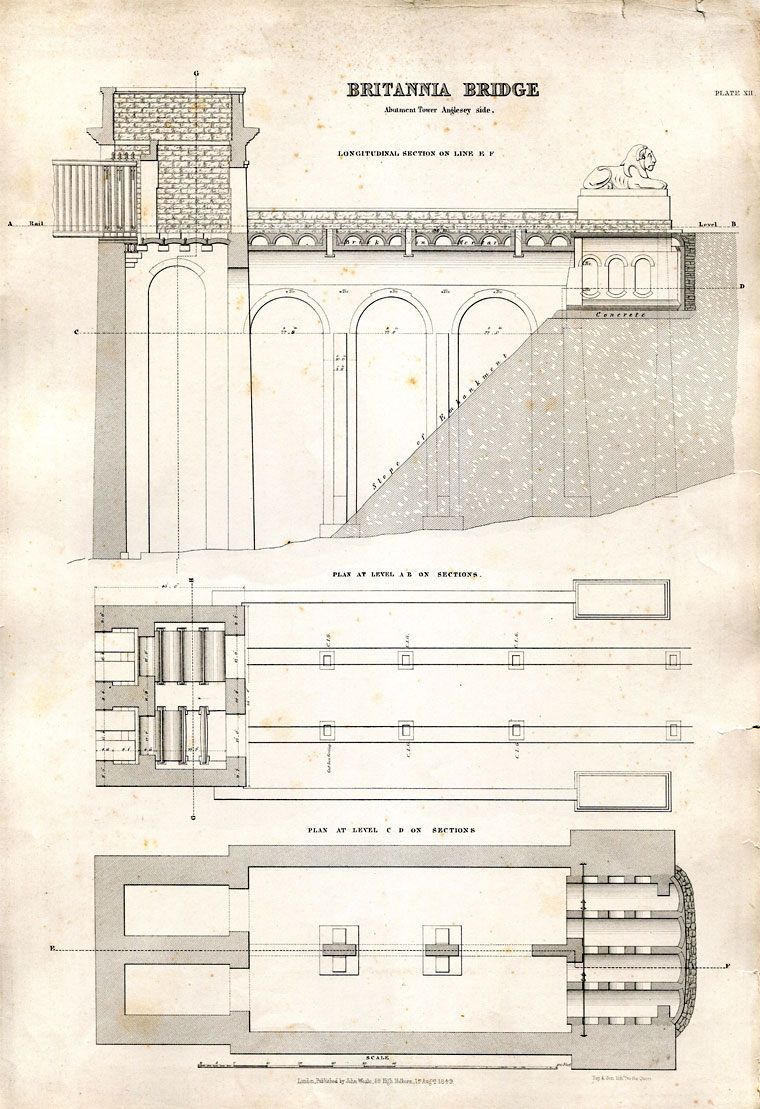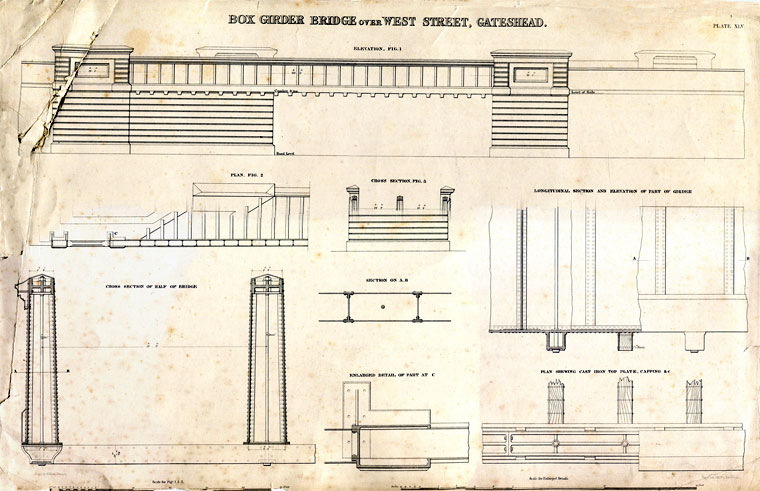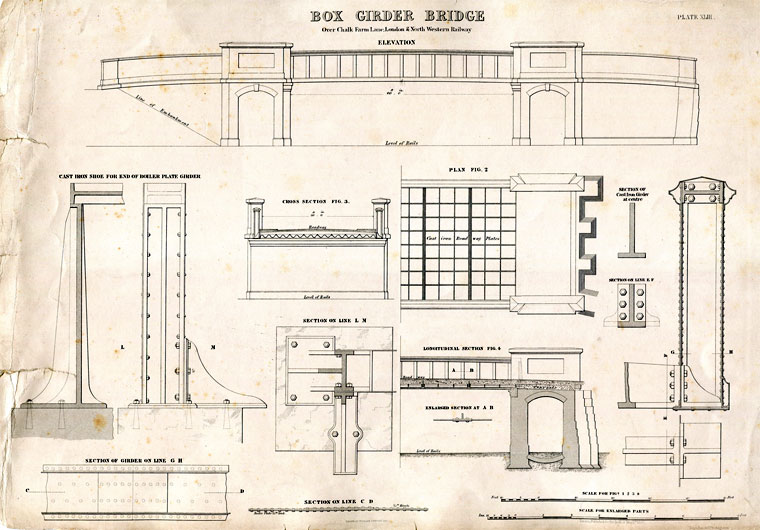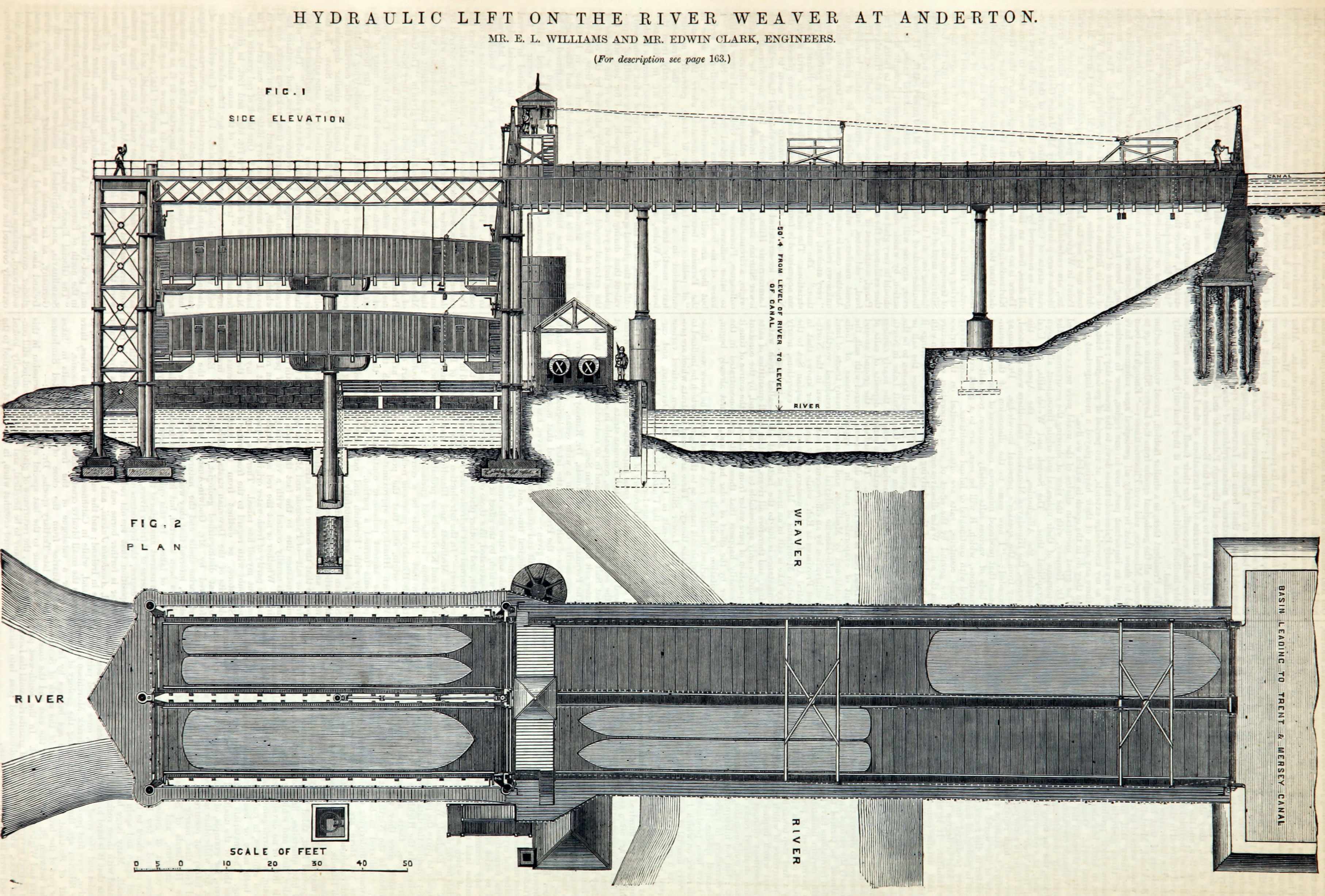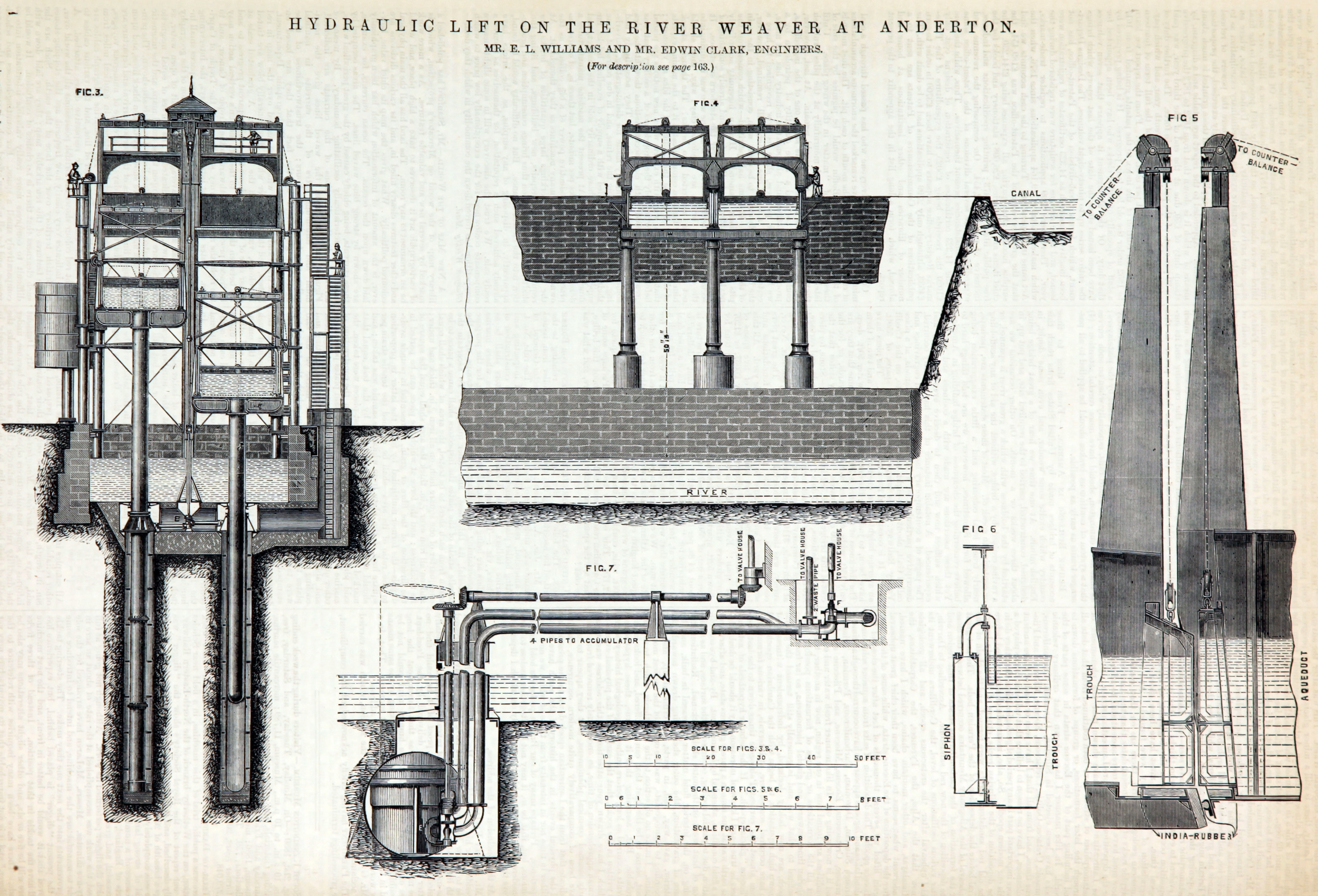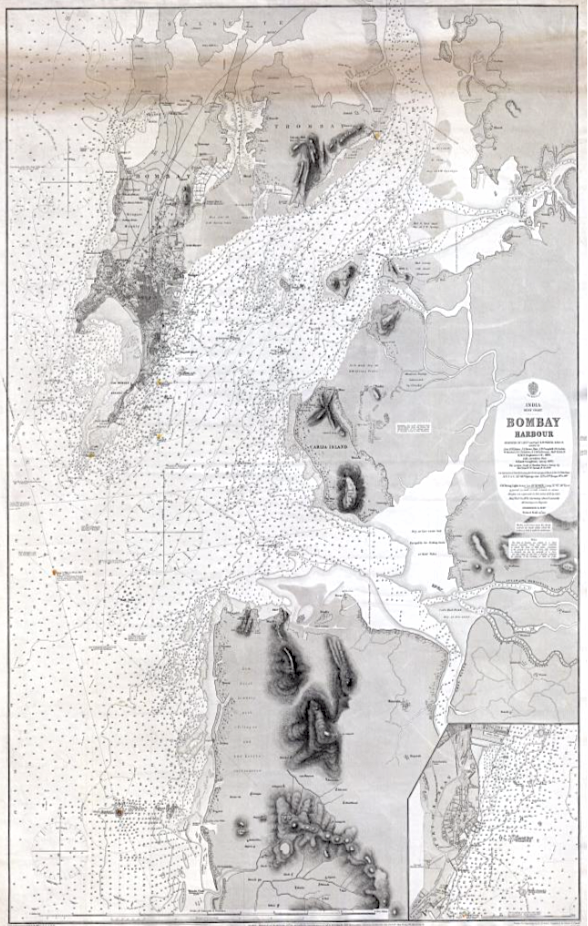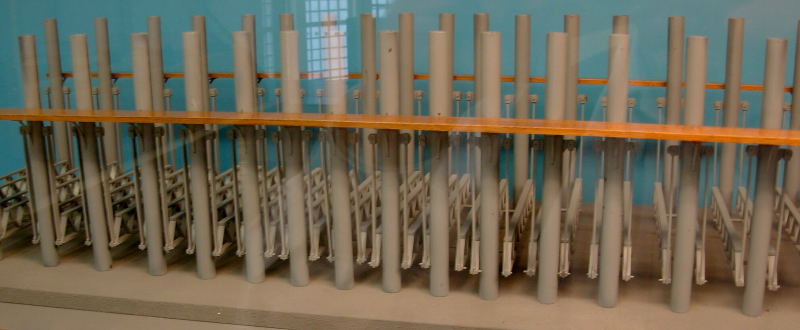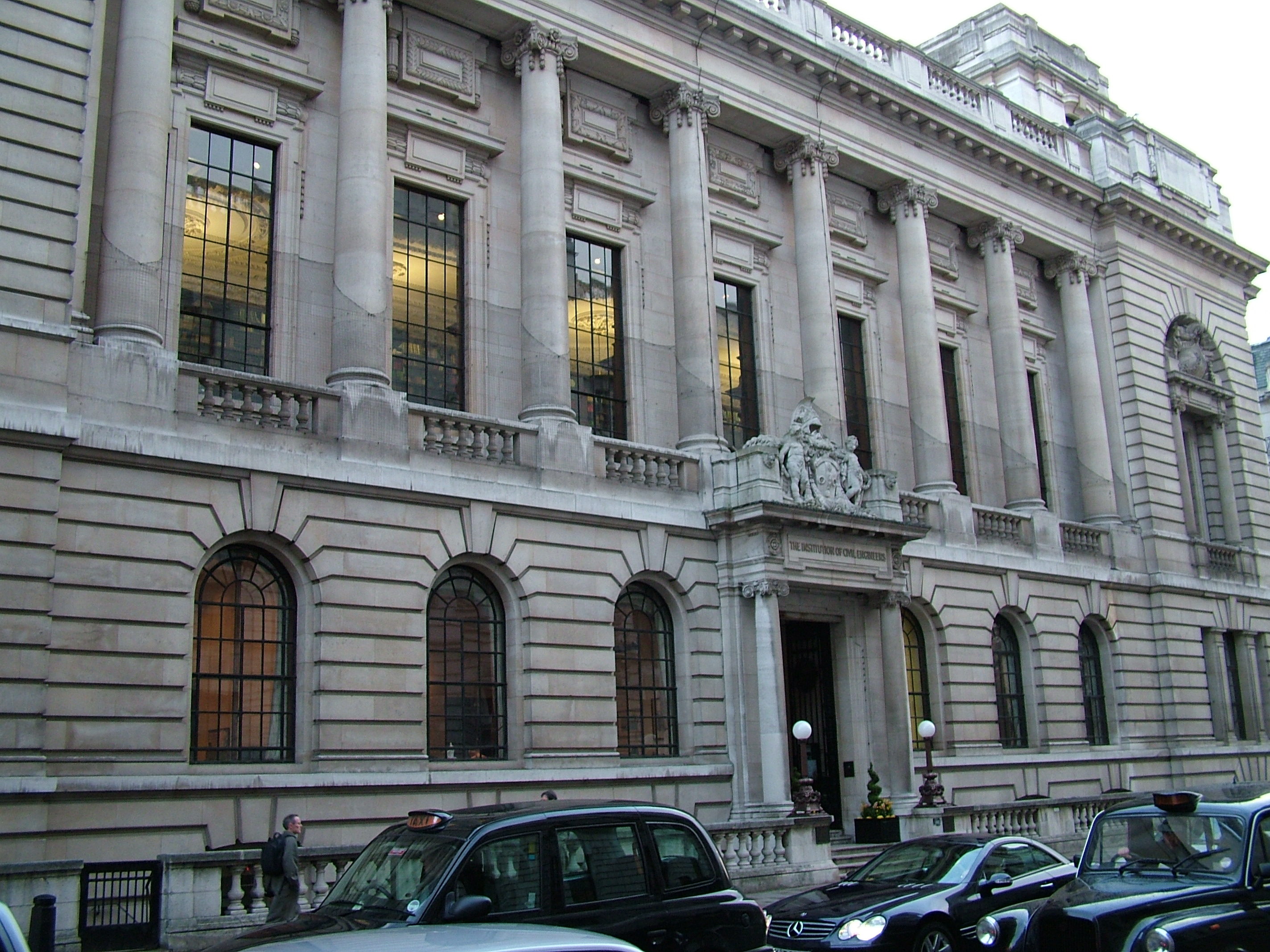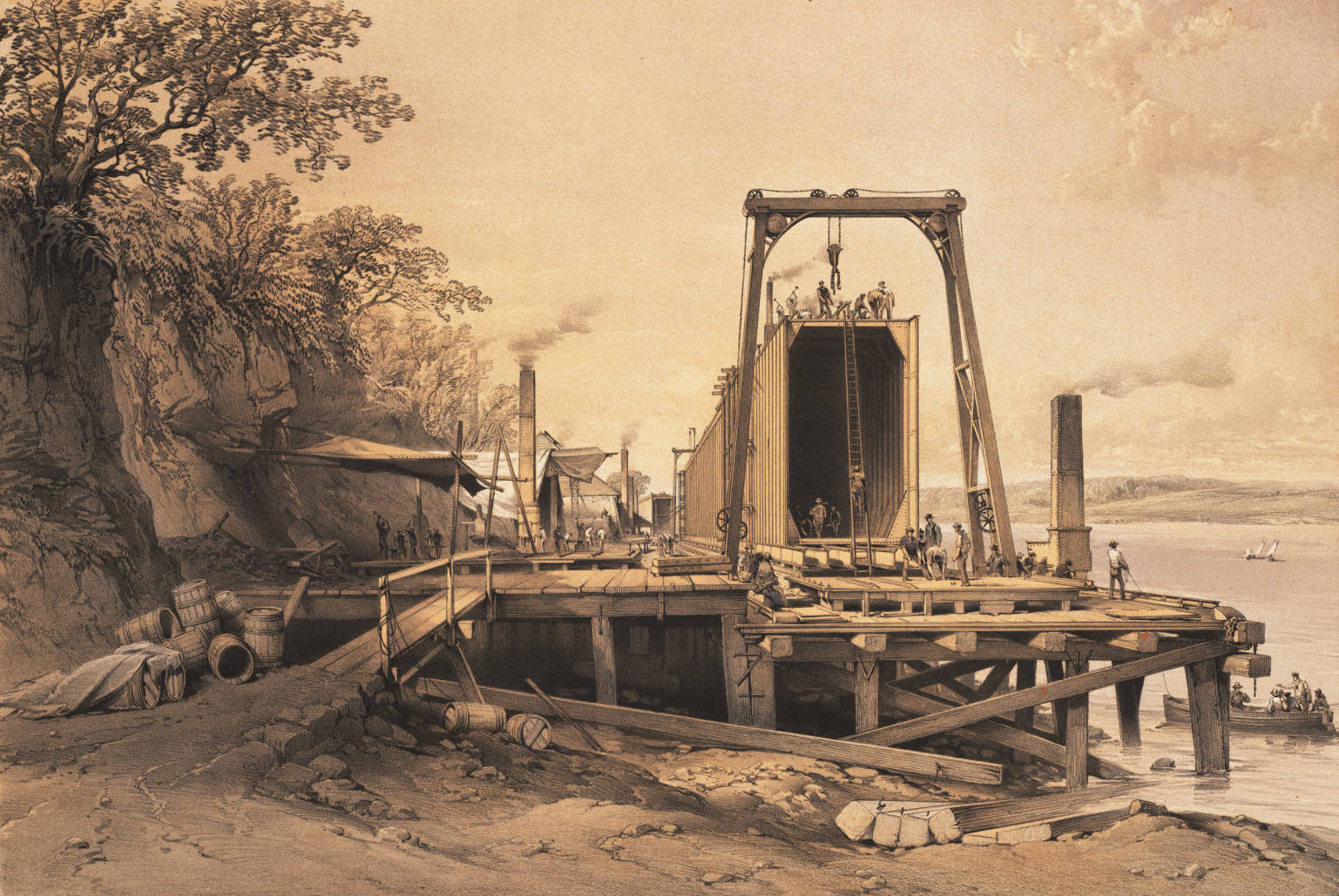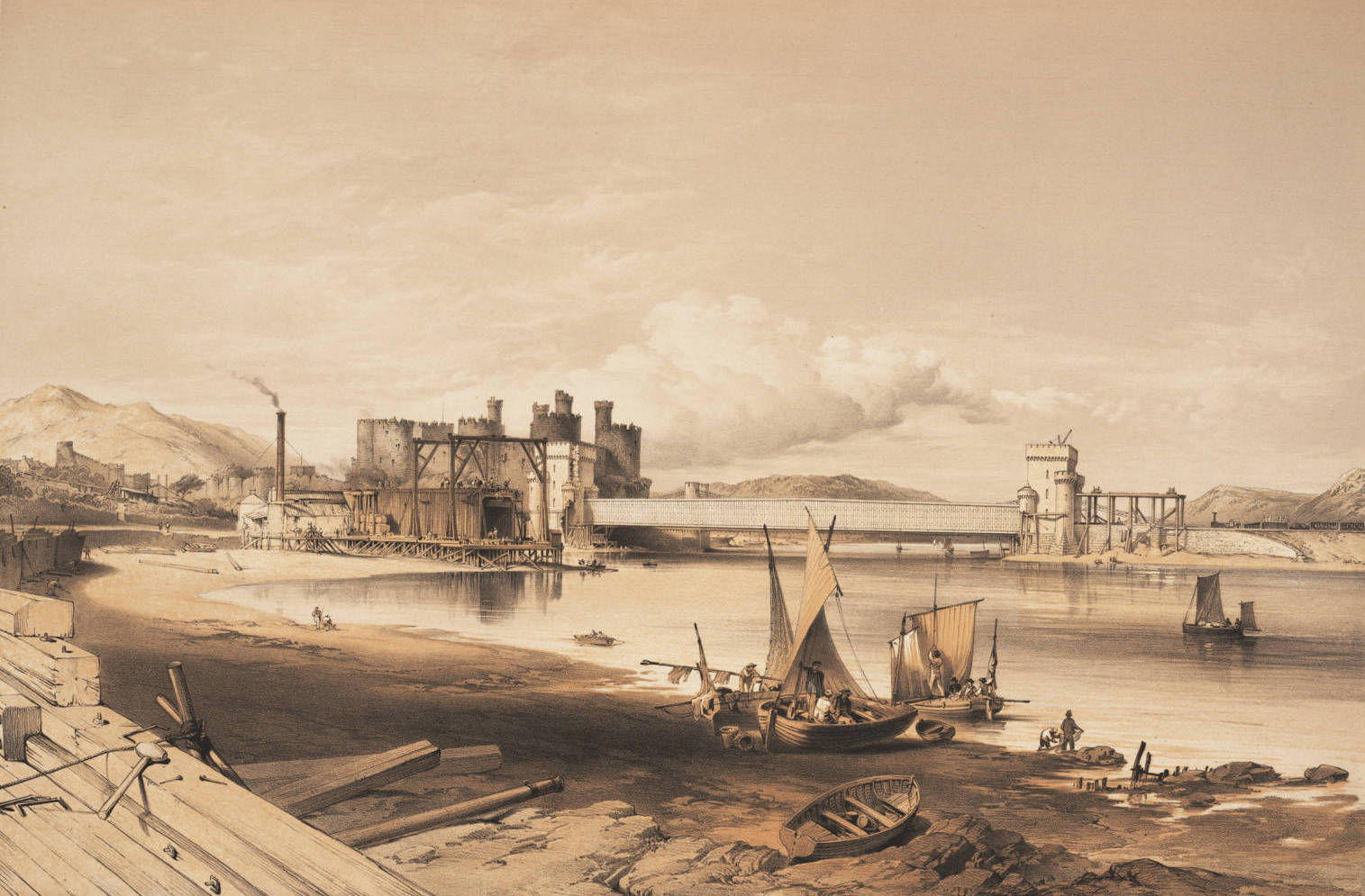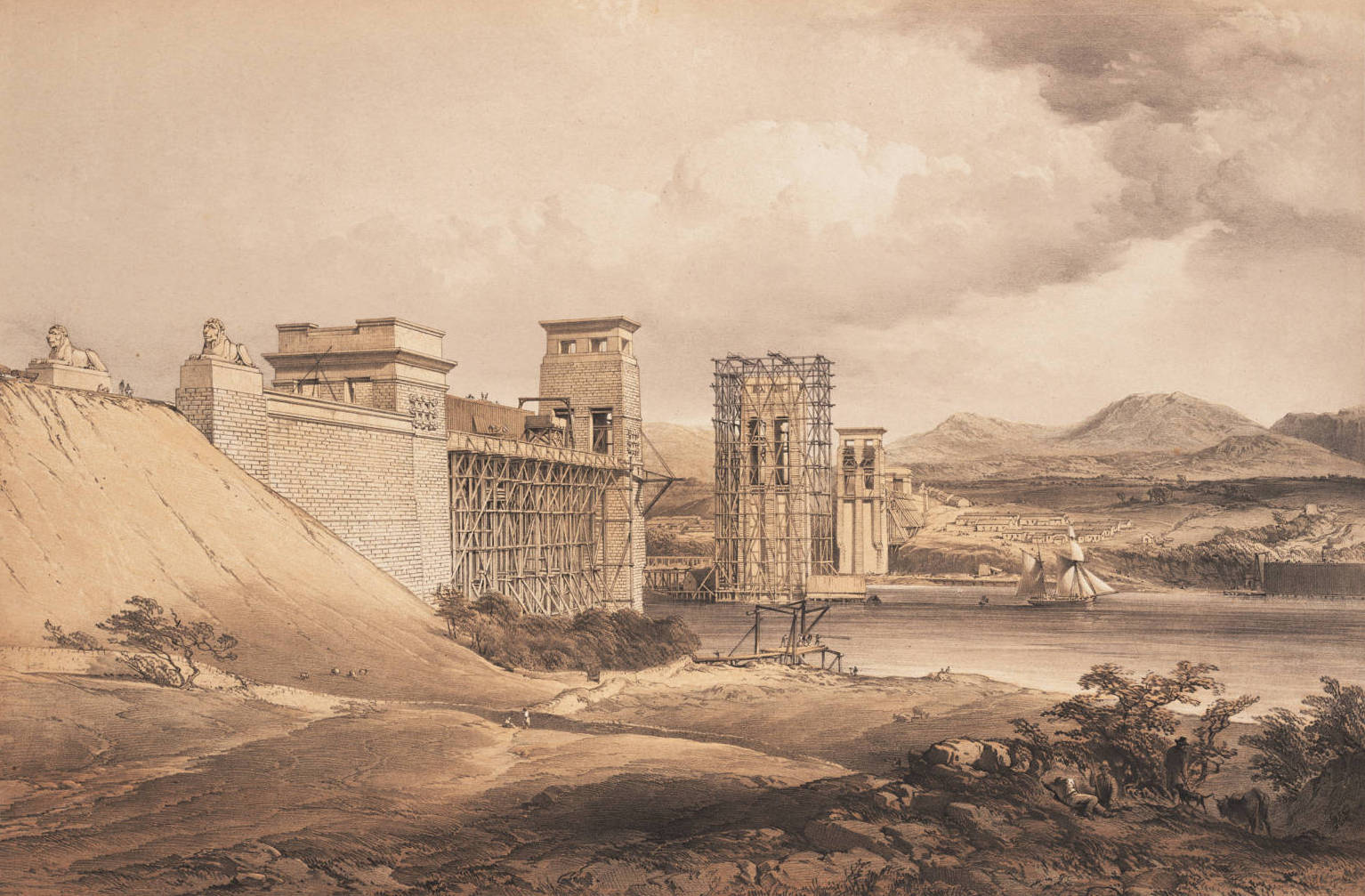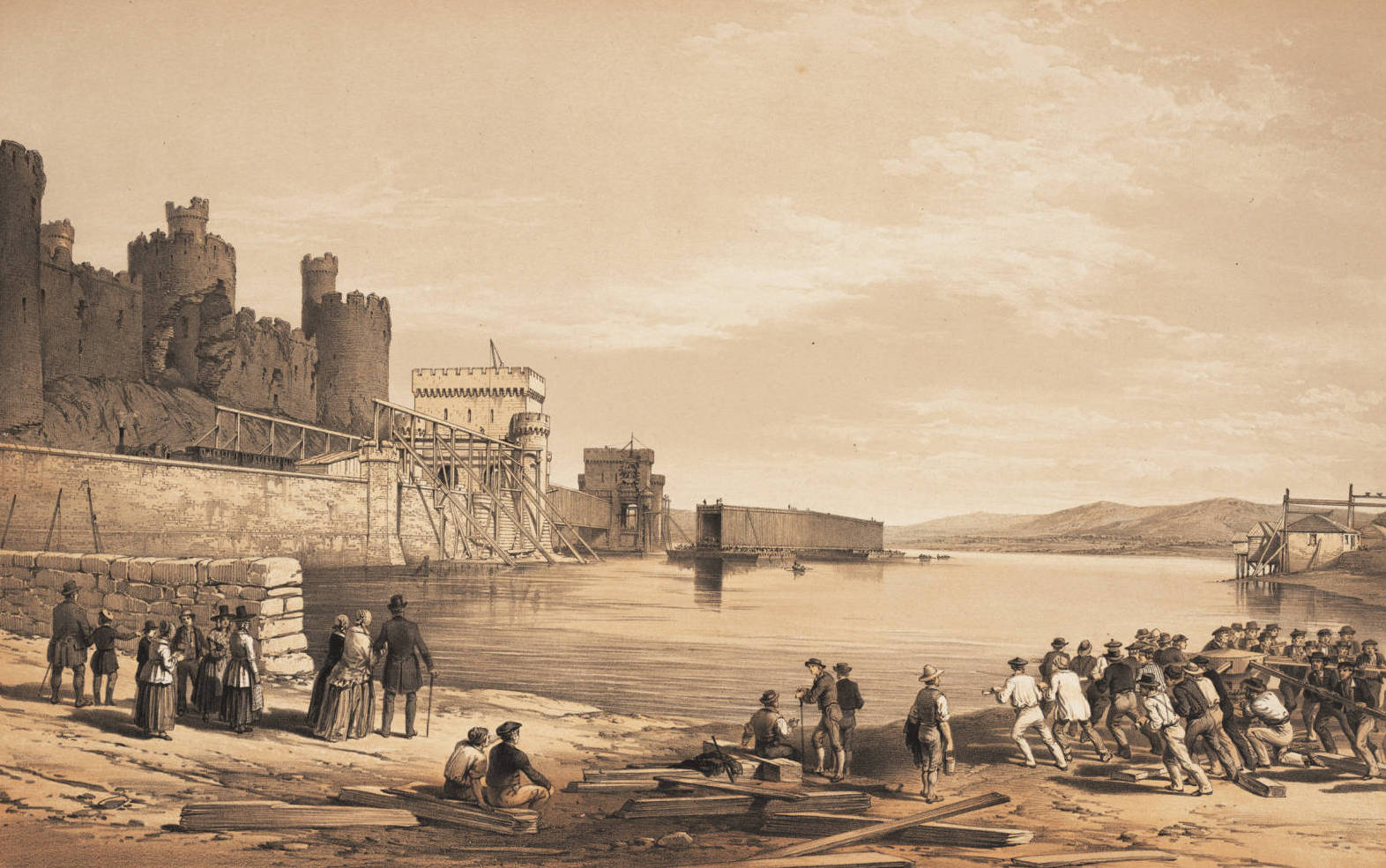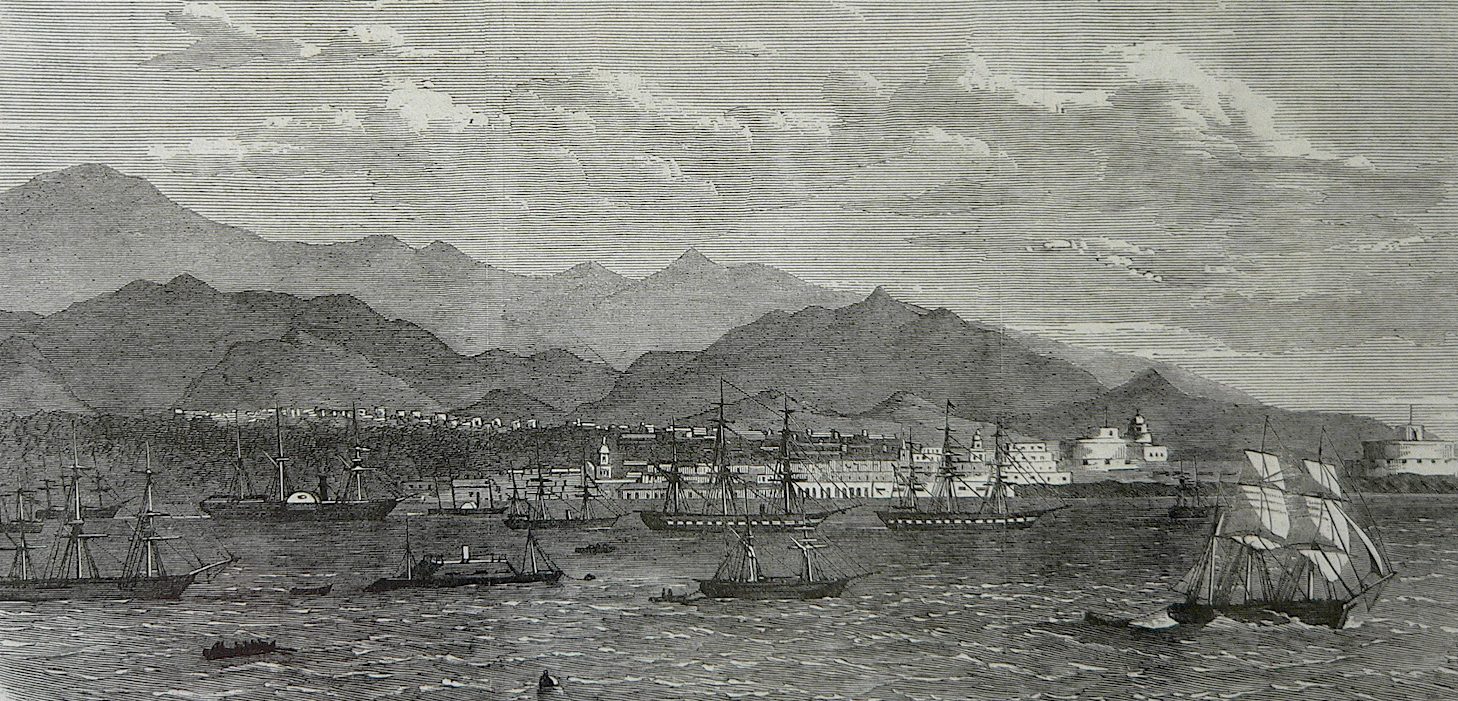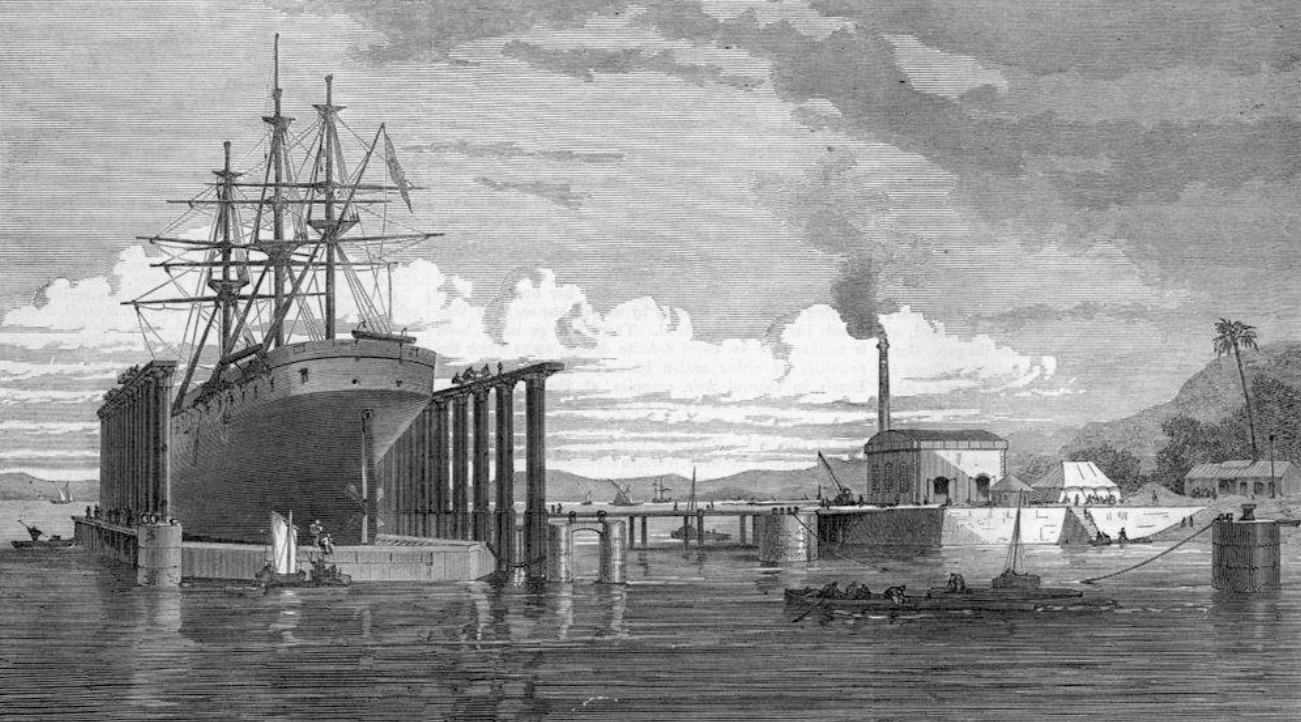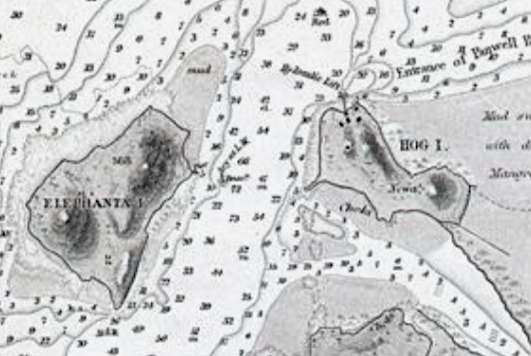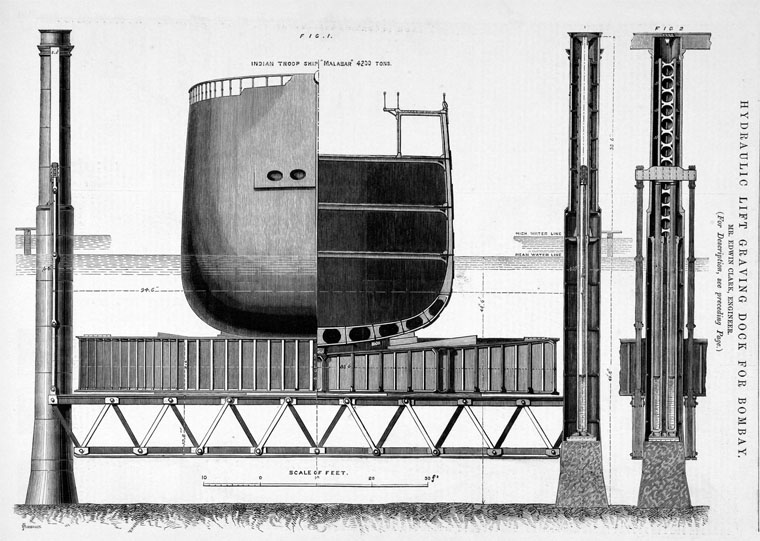Edwin Clark
1814 - 1894
Edwin Clark was born at Marlow on 1814 January 7. His father was a small tradesman, and manufacturer of the pillow-lace for which the neighbourhood was renowned – an industry which came to an end on the introduction of machinery Edwin was the eldest of three boys. (His brother, Latimer Clark, F.R.S., is well known in the scientific world, and is also a Fellow of this Society). After boarding at an old school in the town he was at the age of eleven sent to a French School in Normandy, where in three years he acquired such thorough knowledge of French that his translation of the Chronicles of the Canongate into French was published in France.
He returned home in 1828, and was placed in a solicitor’s office; but scientific tastes seriously interfered with his application to this work. Such tastes were but little understood at the time, and the boy was regarded by all his friends as a ne’er-do-well. But his diligence and attention to science, especially in its practical aspects, ultimately bore fruit. He obtained a position as teacher in his old school, and one of his colleagues, who was reading for the University, strongly urged the advantage he would derive could he go up to for honours at Cambridge.
A small legacy of 130l, which his mother received at this time, was devoted to this purpose. But at the end of two and a half years the legacy and the trade of lace-making had both come to an end, and his impoverished parents found it impossible to continue his maintenance at the University. After some engagements as schoolmaster, Mr Clark resolved on an apparently reckless project. He had long wished to see something of the world, and with ten pounds in his pocket and a knapsack on his back he started on a wild and indefinite tour of the continent. He visited the Rhine, Switzerland, and crossed the Alps into Italy, making observations on glaciers and meteorology, and various scientific collections. He became an artist, and continued his tour through Rome to Naples, Pompeii, Salerno Pæstum, and at length returned to his home in Marlow in 1839, to the great delight of his father and mother. He at once accepted a mathematical mastership at Coombe Wood, and then at Brook Green, Hammersmith, and collected a small library, and stock of scientific apparatus.
But this profession did not hold him long. In 1845 the railway mania had resulted in the great financial crisis, which threw so many surveyors and engineers out of employment; and at this inopportune juncture he suddenly abandoned the school to assist in the survey of the proposed line between Brighton and Oxford. This project speedily collapsed, but Clark’s determination to be an engineer was taken. With an introduction of the most slender character, he repaired to Mr R. Stephenson’s chambers in Great George Street, an office that was destined afterwards to become his home for so many years. Mr Stephenson was at the time overwhelmed with work, especially in the great contest between broad and narrow gauge, and Mr Clark was at once informed of the hopeless improbability of a personal interview. But, nothing daunted, he waited patiently for hours every day in the ante-room during a period of three weeks, and at last was rewarded with a chance interview. He was fortunate enough to be able to prove his abilities almost immediately, and the foundation of his career as an engineer was laid.
After the completion of the Britannia and Conway Bridges, he wrote the well-known book on these structures, to which the whole world looked as the greatest engineering feats to that date. He was assisted by his brother Latimer in this work, which was published in 1850. The Britannia bridge was begun in May 1846, the first of the great tubes lifted on the 23rd June 1849, and the first locomotive ran through in 1850. He was associated with Fairbairn, and carried out under him the celebrated experiments on the strength of materials, and of girders and girder tubes. He delivered a lecture on these bridges in Marlow in 1881. He was elected an Associate of the Institution in December 1850, and was transferred to the class of member in April 1855. He contributed papers to the “Proceedings”, Institution of Civil Engineers, on Hydraulic Lifting Graving Docks in 1866, and on Engineering Philosophy and the Durability of Materials, in vol. xxvi, in 1868, the latter containing some important references to telegraph work and insulating materials.
For many years he was chief engineer to the Electric Telegraph Company, and an interesting pamphlet exists describing his proposals for signalling by electricity on the London and North-western Railway. He patented the hydraulic graving dock and the hydraulic canal lift, and was inventor of the block system of railway signalling. He constructed the famous harbour at Callao, Peru, and carried out engineering works in various parts of the world, and in connection with the Anderton canal lift an important report exists on the causes of failure of some of the great cylinders in 1882.
Retiring in 1876, he settled down at Marlow. Mr Clark was a keen student of astronomy, and was a Fellow of the Royal Astronomical and Meteorological Societies.
The problem on which he won his spurs was that of the Britannia and Conway Tubular Bridges, for the construction of which he was ultimately placed in absolute control as resident engineer. He was for many years chief engineer to the Electric Telegraph Company, and invented and patented the hydraulic graving dock and canal lift. He constructed the great dock at Bombay, and others at Malta and London. He was the designer of a host of bridges, including the great swing bridges at Arnheim, Lyons, and Rochester, the Aire Tubular Bridge, and the Scarborough Viaduct. He was the original inventor of the block system of signalling. Mr Clark also laid the cable from Dungeness to Holland, and negotiated the agreements and erected the telegraph for the chief English railways. He was engineer to the Crystal Palace Company, and completed the building of the Palace after the fire.
Mr Clark was singularly careless about money; in early life he had known poverty, and in 1873 his contracts amounted in the aggregate to five millions and a half. The change of fortune affected him but little. He retired entirely from all business in 1876, travelled for two years in South America, and finally settled down in Cromwell House in his native town. His habits were of the most simple description, but he always enjoined the maxim “that a day had been entirely lost if at its close the practical power had not been acquired of doing something that could not be done before,” and his genial, happy disposition was fitly represented by his favourite motto, engraven on his sun-dial, Horas non numero nisi serenas.1
Mr Clark was elected a Fellow on 1858 July 9, but contributed no papers to the Society. He had, however, a keen interest in Astronomy, as in all other branches of science. He was the owner of a fine 8-inch refractor by Ross, and continually used it until within a year or two of his death. He had a good astronomical library, and kept a very careful meteorological record at Marlow.
In a public lecture at Great Marlow, such as he delighted to give, he has described his early astronomical education, which began with the naked-eye observations of the Moon and stars as they appeared and disappeared among the tall chimneys from a window in the East End of London. These chimneys were his transit-wires. An old German in the neighbourhood lent a copy of “Ferguson’s Astronomy,” and “I soon calculated eclipses, and mounted a cardboard transit instrument and equatorial on a water-butt at the back of the house.”
Hog Island
The Marathi name for the island is Nhave. It got an English name because it was here that ships used to be hogged, that is laid on one side and scraped. Mr. James Douglas. (T. Panvel), with a population of 1,875 in 1951 lies in the Bombay harbour about ten miles east of the Apollo Pier. The rock is chiefly black basalt which appears not only in viens and dykes, but forms the highest masses of the island, and even presents little headlands towards the harbour. Jour. Bom. Br. Roy. As. Soc. VI. 169. The Hindus have two names for the island, DevadevI and Nhave. The Portuguese called it Ilha de patecas, or water-melon island, a name which appears in Fryer’s (1680) Putachoes. Da Cunha’s Bassein, 204, Fryer’s New Account, 62, 76. It seems to be Hamilton’s (1720) Salvageo ‘about a league from Elephanta and affording nothing but firewood. New Account, I. 242. It was ceded to the English by the treaty of Salbai (1782 Nairne’s Konkan, 103.) The following account of the hydraulic lift as given in the old Kolaba Gazetteer (1883) makes an interesting reading even though the lift is not existing at present.
Hydraulic Lift.
“The Contributed by Mr. F. B. Maclaran, C. E. chief object of interest on the island is the Hydraulic Lift Graving Dock. Before the Suez Canal was opened, the yearly military reliefs between England and India were carried by five troopships, of which two worked on the European side and three on the Indian side of the Isthmus of Suez. A special dock was required for the three troopships doing duty on the Indian side, as the depth of water over the sill of the Bombay graving dock could admit them only at exceptionally high tides”.
“About 1866-67 a committee was appointed to advise on the best form of dock. After visiting some of the most important graving docks in England they recommended a Clark’s Hydraulic Lift like one then in use at the Victoria Docks on the Thames. A Clark’s Lift large enough for. an Indian troopship was ordered, Mr. Edwin Clark, Mem. Inst. C. E., being the Engineer, and Messrs. Emerson and Murgatroyd of Stockport and Liverpool, the contractors. An engineer was sent from England to choose a site fixed on the north shore of Hog Island, about eight miles east of Mazganv, where there is deep water close to the shore. Whether this site is the best that could have been chosen is a matter of opinion. There is no doubt that the distance of Hog Island from Bombay has. in a great measure, led to the practical abandonment of the dock.”
“Most graving docks consist of a basin into which a ship is floated during high water. The gates are then closed and the water discharged either by gravitation as the tide ebbs, or by pumping. As the water sinks, the ship is shored by timber against the sides of the basin. The Hydraulic Lift Graving Dock is on a different plan. Instead of the water being removed from the sides of the ship, the ship is lifted out of the water.”
“The Hog Island Lift consists of two rows of hollow cast-iron columns, six feet six inches in diameter, sunk to a solid foundation at depths varying from fifty to seventy feet below high water level. The two rows of columns are eighty-eight feet apart, and, in each row, the eighteen columns are eighteen feet apart at the centre and twenty-four feet apart at the ends. Inside of each column a pair of hydraulic presses and rams. fourteen inches in diameter and having a stroke of thirty-four feet, rest on a bed of Portland cement concrete. To the top of the rams, Hat iron chains are fastened by strong iron cross-heads, and, at the lower ends of toe chains, wrought-iron girders stretch under water across the lift from one row of columns to the other. These girders arc of the Warren girder type twelve feet deep and of great strength. There are thus eighteen pairs of girders forming a sort of grid between the two rows of columns. The rams are worked by hydraulic pressure from two pairs of powerful steam pumping-engines placed in an engine house on shore, the water being supplied to the pumps from an overhead tank and carried in pipes from the pumps to the rams under a pressure of 17 cwts. the square inch. The pipes are laid along a gangway eighteen feet wide and 200 feet long, supported on cast-iron columns two feet three inches in diameter, which forms a passage between the lift and the work-shops on the shore. At the outer end of the gangway is a valve house, with an ingenious arrangement of valves, whereby one man” can with ease shut off or apply pressure to the presses and rams at any part of the lift. These valves are further divided into three groups in such a manner that in lifting a ship, should the weight be uneven and the rams not be working at the same rate, one man can by manipulating the valves bring the whole to one level.”
“Attached to the lift is a pontoon, or tray of wrought iron, eighty-four feet wide and 380 feet long, with sides nine feet deep. This tray is made of longitudinal and transverse wrought-iron girders and plating, and is divided into bays or chambers by longitudinal and transverse bulk heads. At the bottom of each chamber is a large valve which allows water to pass out or in. When a ship is to be docked, the pontoon is brought into position between the rows of columns and over the transverse Warren girders which are raised into position to receive it; the valves of the pontoon are opened and it is quietly lowered into the water. When the pontoon is deep enough the ship is brought over it, and the pressure being admitted into the presses, the pontoon is raised until the keel of the ship bears against the keel blocks previously arranged along the centre of the pontoon. Sliding bilge blocks, with which the pontoon is also fitted, are then drawn up by chains leading on to the side platforms of the lift, and the ship being safely berthed on the pontoon the whole is lifted out of the water. As soon as the ship and pontoon are clear of the water, any additional shoring that is necessary is put in, the pontoon valves are closed, and the whole lowered. This time the pontoon floats with the ship on it, and as it does not draw more than six feet, it may be towed to any convenient shallow basin. The lift is ready for another pontoon and another ship. The time spent in actual lifting is about twenty minutes, and for the whole operation not more than an hour and a half. With two pontoons in readiness there would he no difficulty in lifting and docking two ships on one tide.”
“To help the working of ships and of the pontoon in and out of the lift, powerful capstans have been set on large cast-iron cylinders, twenty-two feet in diameter and filled with concrete, two being at the west entrance and one between the lift and the shore. A steam capstan has also been provided at the shore and at the gangway, and snatch-heads and bollards on the plat-forms on the outer sides of the rows of columns.”
“The work was begun in 1869, but, owing to delay in receipt of material, it was not in full swing until November 1870. It was completed in September 1872 and was taken over by a committee appointed by Government on the 12th September 1872. On this occasion the Resident Engineer and contractors were anxious to prove the usefulness of the work by lifting a ship. Government ordered the turret ship Magdala to be held in readiness, but it was afterwards feared that, if lifted out of the water, the Magdala might be strained by the weight of her armour plating. As no vessel was available, the strength of the lift was tested by raising the pontoon full of water, a weight of 8,100 tons or 62 per cent. more than the weight of the heaviest troopship.”
“The cost of the lift with pontoon and other apparatus is supposed to have been about Rs. 30,00,000. The exact figures are not available, as nearly the whole amount was paid in England by the Secretary of State. The work in India was supervised by Mr. J. Standfield, C.E., Resident Engineer, Mr. F. B. Maclaran, C.E., being the contractors’ agent, and Lieutenant, now Captain, Haydon. R.E., Executive Engineer, representing the Government of Bombay”.
“By the opening of the Suez Canal the necessity for docking troopships in India ceased. For the same reason, ships of the Mercantile Marine which were formerly docked in Bombay have their repairs done in England. On this account, and, because of its distance from Bombay, the Hog Island Lift has been little used. When it has been used the machinery has worked well.”
Article sourced from the Kolaba District GAZETEER
Mr Clark died from internal cancer on 1894 October 22. He had suffered for some three years, and bore his long painful illness with exemplary fortitude and patience until the last.
References
1. “I don’t count the hours unless they’re tranquil” I.e., ‘I don’t pay attention to time passing unless I’m at peace’.


